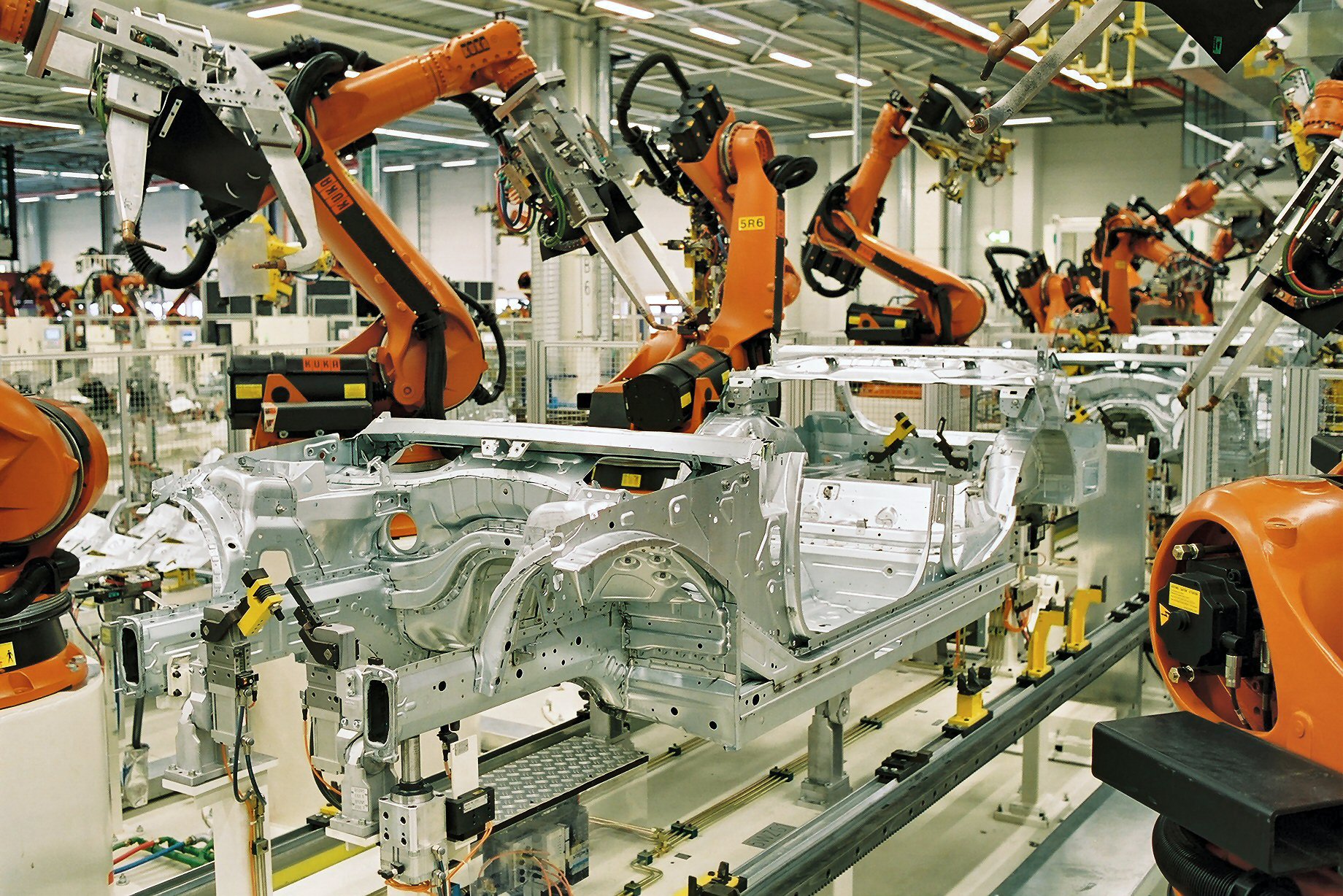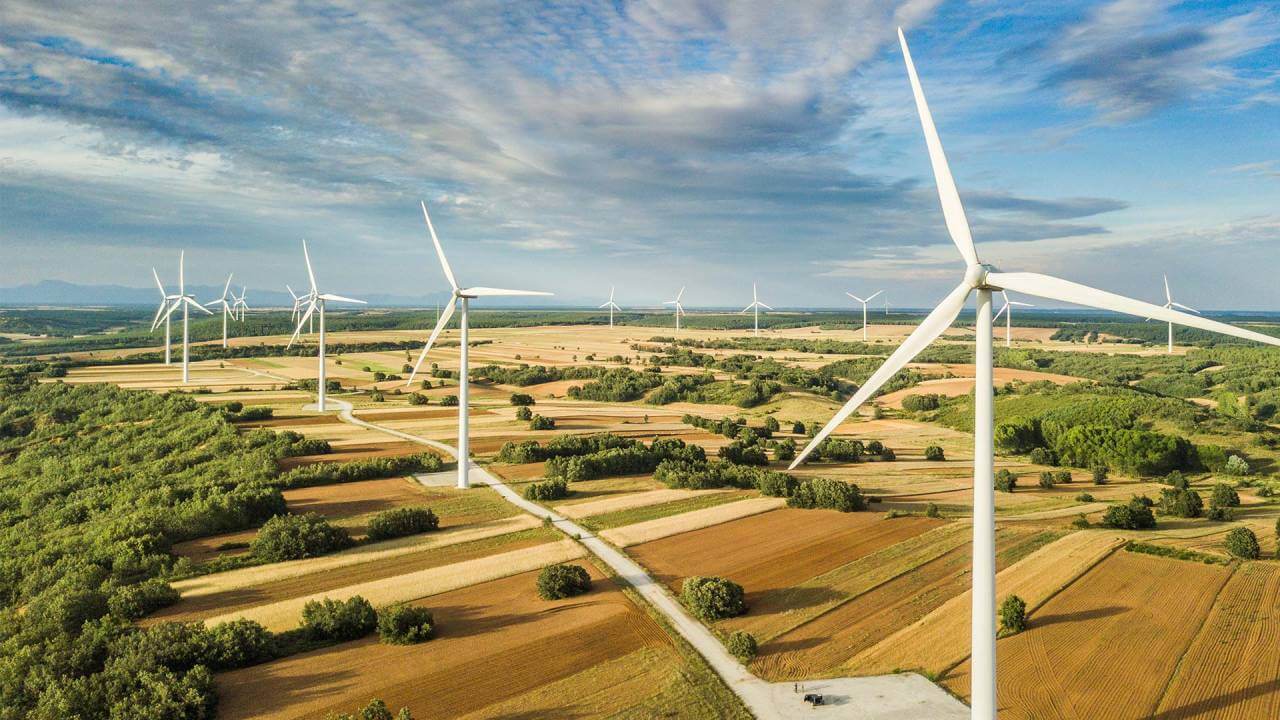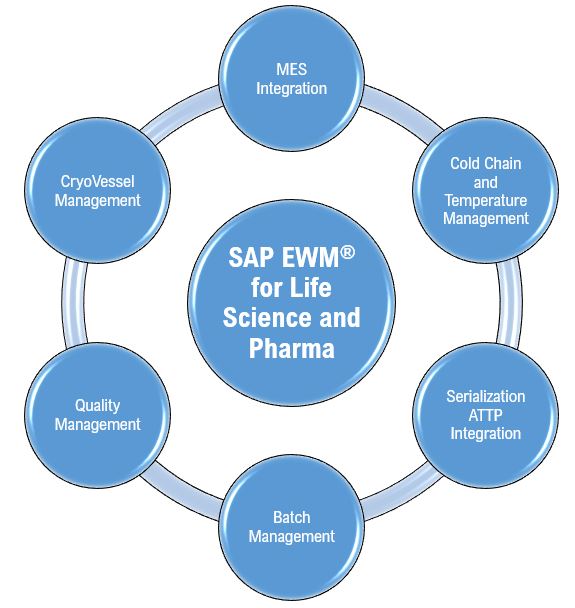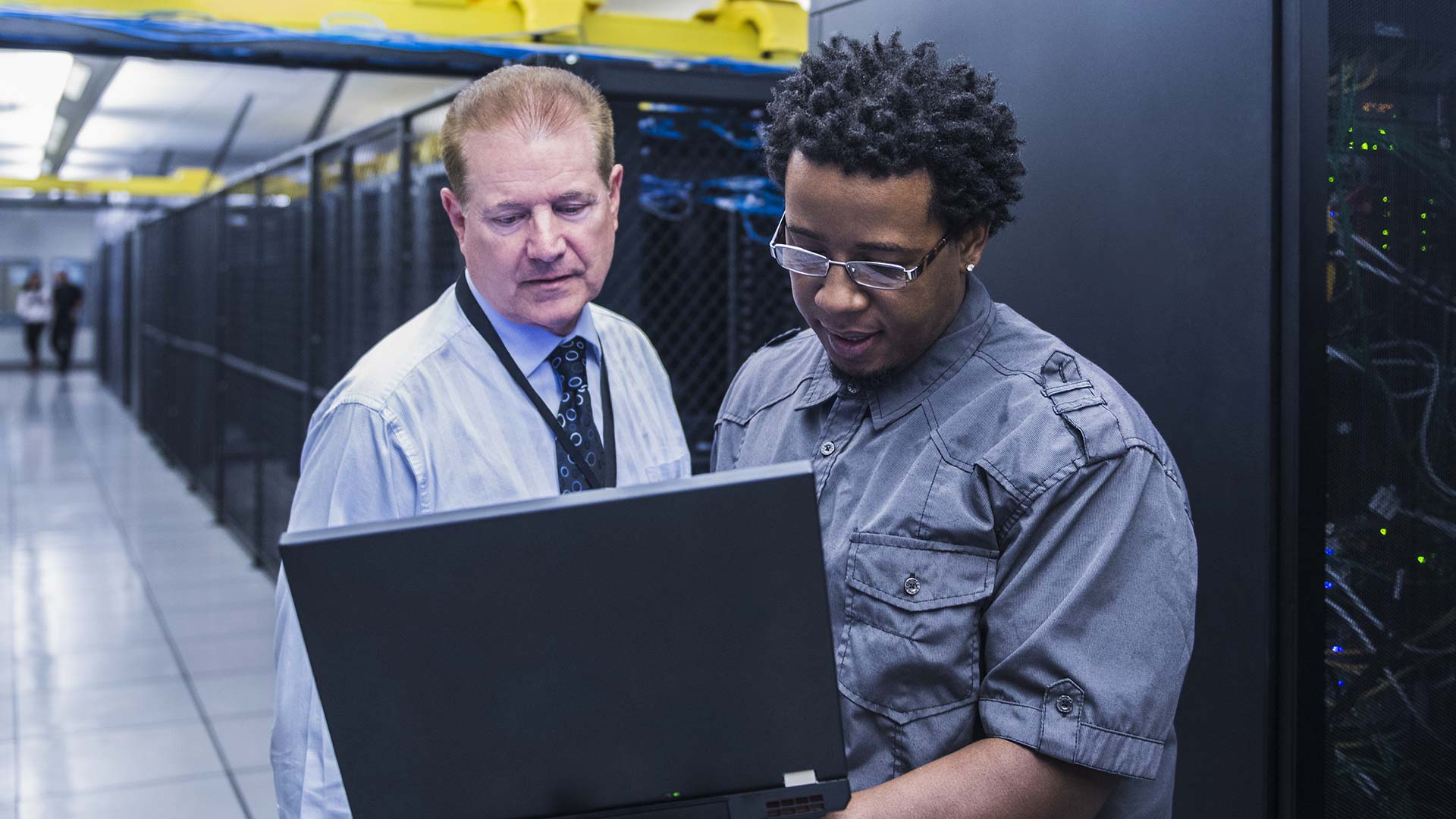1. Introduction
Mining remains one of the most resource-intensive industries, navigating increasingly harsh terrains to extract valuable minerals. Whether it’s the searing deserts of Western Australia, the frozen Arctic expanses, or the labyrinthine underground tunnels of Central Africa, efficient material movement lies at the heart of mining success.
Traditional systems, reliant on heavy trucks, rail, and conveyor belts, are often insufficient or unsustainable in extreme environments. Yet, new waves of innovation are transforming how materials are moved from the remotest shaft to the processing facility. From AI-powered automation to nature-inspired biomining, the mining industry is witnessing a revolution driven by the convergence of technology, sustainability, and ingenuity.
This article explores how emerging technologies and environmentally integrated approaches are solving long-standing logistical challenges in mining’s harshest terrains, unlocking safer, faster, and more sustainable material movement.
2. Traditional Material Movement Methods
Material movement has always been one of the most vital components of mining operations. Efficiently transferring extracted ore, waste rock, and backfill from the mine face to the processing plant or stockpile is essential for ensuring continuous production and minimizing downtime. Historically, mining operations have relied on a range of heavy-duty mechanical systems, each suited for different terrains and mine types. However, while these methods have supported the industry for decades, they are now reaching performance and sustainability limits, especially in the world’s most extreme mining environments.
2.1 Diesel-Powered Haul Trucks
Overview:
Diesel-powered haul trucks are the backbone of open-pit mining logistics. These colossal machines, weighing hundreds of tonnes, are designed to transport bulk materials from pit faces to crushers or stockpiles. The largest models, like the Caterpillar 797F or the Komatsu 980E-5, can carry over 400 tonnes of payload.
Use Case Example:
In Chile’s Atacama Desert, some of the world’s largest open-pit copper mines, such as Escondida, rely on fleets of over 200 trucks operating 24/7.
Limitations:
High fuel consumption: A single ultra-class haul truck can consume 3,500–5,000 liters of diesel per day.
Carbon emissions: A fleet of 100 trucks can emit over 500,000 tons of CO₂ annually.
Maintenance: Dust, extreme temperatures, and payload stress cause frequent tire blowouts and engine wear.
Labour dependency: Truck drivers require rest cycles, and remote locations often struggle with recruitment and retention.
2.2 Conveyor Belts
Overview:
Conveyor belts are long-distance material transport systems used to move crushed ore from the mine to the processing plant. They can stretch for tens of kilometers and are often installed on steep terrain with modular support.
Use Case Example:
The Los Pelambres copper mine in Chile uses a 12.7 km long conveyor system to move ore from the high-altitude pit to the concentrator, replacing 100 trucks.
Limitations:
Terrain sensitivity: Irregular or unstable terrain makes belt installation complex and costly.
Infrastructure rigidity: Conveyor paths are fixed and hard to modify during operational changes.
Component wear: Belts, rollers, and motors are susceptible to environmental damage—especially from ice, debris, and heat.
Energy demand: Long belts require significant power, often sourced from fossil-fuel grids in remote regions.
2.3 Rail Wagons and Mine Railways
Overview:
Rail systems have traditionally been used in both underground and surface mining to move bulk materials over medium-to-long distances. Rail cars are often loaded at shaft bottoms or open-pit crushers and transported to processing hubs.
Use Case Example:
In the Russian Norilsk Nickel mine, Arctic temperatures and long distances between shafts and smelters make narrow-gauge rail systems the most viable option.
Limitations:
Limited flexibility: Tracks cannot be easily adjusted if mining zones shift.
Capital-intensive: Installation and maintenance of rail infrastructure (tracks, switches, loading systems) are expensive.
Weather exposure: Snow, mud, and rockslides can halt operations, requiring frequent clearing and inspections.
2.4 Cable Hoists and Elevators
Overview:
In underground mining, vertical transport of ore and waste relies on cable hoists and elevators, also known as skips. These are installed in shafts and are engineered to carry hundreds of tonnes of ore per lift.
Use Case Example:
The Palabora Mine in South Africa has one of the deepest hoisting systems in the world, transporting ore from over 1,200 meters underground.
Limitations:
Capacity limits: Even the best-designed hoisting systems have throughput bottlenecks compared to continuous surface systems.
Mechanical stress: Rope tension, temperature variations, and ore spillage increase wear and potential downtime.
Safety risks: Any hoist failure or misalignment can cause catastrophic accidents, leading to fatalities and extensive delays.
2.5 Cross-Cutting Limitations Across Traditional Systems
Challenge and Impact
- Fuel Consumption & Emissions: Diesel-dependent systems are costly and unsustainable under net-zero goals.
- Mechanical Downtime: Components degrade faster in harsh climates—e.g., extreme cold or dust storms.
- Terrain Accessibility: Steep slopes, frozen ground, or swampy regions hinder fixed or heavy systems.
- Human Dependency: Labour shortages in remote regions cause underutilization and safety concerns.
- High Operational Costs: Frequent maintenance, high energy usage, and limited automation raise total cost of ownership.
Why These Limitations Matter More Now
In today’s mining landscape, companies are increasingly pushed to:
- Reduce carbon emissions and comply with ESG goals.
- Optimize costs amidst declining ore grades and volatile commodity prices.
- Operate in new geographies with limited infrastructure and extreme environments.
- Address growing investor and public scrutiny over safety, environmental, and social impact.
- This sets the stage for emerging, intelligent, and sustainable solutions that can overcome these traditional limitations—ushering in a new era of material movement technology, as we explore in the next sections.
3. Emerging Technologies Transforming Material Movement
3.1 Autonomous Haulage Systems (AHS)
Autonomous trucks—pioneered by Rio Tinto and Caterpillar—now operate across Australia and Canada. These driverless vehicles navigate complex paths using LiDAR, radar, and GPS, reducing human risk and improving operational continuity.
Case: Rio Tinto’s autonomous truck fleet in the Pilbara region has moved over 2 billion tonnes of material, reducing fuel usage by 15% and incidents by over 80%.
3.2 Rail-Veyor and Aerial Ropeways
Rail-Veyor Technologies Global Inc. has developed an automated, electric rail system that offers the flexibility of a truck with the efficiency of a train. Operating both on surface and underground, it can handle steep inclines and tight curves.
Case: Vale implemented a Rail-Veyor system at its Ontario site, replacing diesel trucks and saving over $30M in operational costs.
Aerial ropeways are seeing resurgence in hilly regions like the Andes and Himalayas, using cable transport systems to move materials across deep valleys and ridges where traditional transport fails.
3.3 Conveyor Belt Innovation
New generation conveyor systems feature:
- Modular designs with less ground footprint.
- AI-based wear detection.
- Solar-powered and regenerative braking systems.
- Weir Group and Sandvik have led innovations in long-distance curved conveyors that can adapt to terrain topography.
4. Case Studies of Innovation in Action
In response to mounting pressure around cost-efficiency, environmental stewardship, and operational safety, mining giants are embracing smart automation, electrification, and AI-based solutions to overhaul how materials are moved through the mine-to-mill process. This section explores real-world case studies where innovative technologies have been successfully deployed in harsh environments to address legacy challenges.
4.1 Epiroc’s Material Handling Systems
Innovation Highlight:
Epiroc’s Scooptram ST14 Battery-Electric Loader represents a significant shift from traditional diesel-based loading units. Equipped with autonomous tramming capabilities, these loaders can self-navigate complex, narrow underground tunnels using lidar, proximity sensors, and onboard mapping algorithms. They transport ore to drop points and charging bays without operator intervention, improving safety and efficiency.
Case Study: Agnico Eagle’s LaRonde Mine, Quebec, Canada:
Challenge: Operating over 3,100 meters below the surface, LaRonde faced intense heat, poor air quality, and rising ventilation costs due to diesel equipment.
Solution: Epiroc’s ST14 battery-electric loaders replaced diesel scoop trams in deep sections of the mine.
Results:
- Ventilation energy reduced by 40% due to zero diesel exhaust.
- Heat reduction of ambient working conditions by over 2°C in certain areas.
- Improved worker safety with lower exposure to exhaust and noise.
Autonomous navigation enabled continuous night shifts without extra staffing.
Why It Matters:
In deep underground operations where ventilation accounts for 30–40% of total energy use, eliminating diesel combustion has an immediate impact on costs, carbon emissions, and worker health. Epiroc’s modular battery packs also allow for hot swapping, extending loader availability beyond conventional limits.
4.2 Komatsu and Modular Mining – The Frontrunner Ecosystem
Innovation Highlight:
Komatsu’s Frontrunner Autonomous Haulage System (AHS) brings together driverless trucks, intelligent shovels, and digital twin simulations in a tightly integrated fleet ecosystem. Built on Modular Mining’s MineCare and DISPATCH platforms, Frontrunner uses real-time telemetry, predictive analytics, and optimized task scheduling to coordinate thousands of autonomous haulage events per hour.
Case Study: North American Surface Coal Mine (Name Withheld):
Challenge: Fluctuating production due to variable truck-shovel alignment, long queues, and inefficient dispatching.
Solution: Full deployment of Frontrunner AHS with integrated DISPATCH optimization and MineCare asset health monitoring.
Results:
- 10% increase in material moved per shift, attributed to optimal dispatching and reduced idle time.
- 20% reduction in haulage costs from better route optimization and fuel savings.
- Improved truck utilization by up to 30%, enabling leaner fleet operations.
- Enhanced safety: no human drivers in high-risk haul zones.
Why It Matters:
In sprawling coal mines where hundreds of truckloads are moved daily, even marginal improvements in routing and loading can save millions. Frontrunner’s use of AI and machine learning enables dynamic decision-making and continuously improves system performance based on real-time operational data.
4.3 BHP’s Smart Shovels – Deep Learning at the Face
Innovation Highlight:
BHP is applying deep learning algorithms to optimize the loading efficiency of its electric rope shovels. Sensors and edge computing devices installed on the shovel arms gather data on bucket angles, material density, fragmentation, and bench geometry. These inputs feed a real-time model that adjusts dig angle and depth for maximum efficiency.
Case Study: Iron Ore Operations in Western Australia:
Challenge: Variable ore fragmentation led to inconsistent bucket fills and wear on equipment.
Solution: Deployment of AI-enabled shovels with predictive loading algorithms.
Results:
- Increased fill factors by 8–12%, reducing the number of shovel passes required.
- Reduced fuel consumption on haul trucks due to better load distribution.
- Lower maintenance costs thanks to gentler digging patterns that minimized hydraulic shock.
- Improved productivity: increased cycles per shift with minimal operator input.
Why It Matters:
Shovel performance is a key bottleneck in open-pit mines. Every second saved per load cycle can equate to millions in yearly savings. BHP’s smart shovels demonstrate how artificial intelligence can extend machine life, reduce wear, and ensure each haul truck departs with optimal load—improving both operational economics and sustainability metrics.
These examples showcase a growing ecosystem of technologies where mining companies are shifting from reactive to predictive, manual to autonomous, and carbon-intensive to energy-efficient operations.
5. Challenges Mining Companies Face
While innovation is transforming the face of material movement in mining, the road to full-scale modernization is riddled with obstacles. These challenges stem from environmental, technological, human, and infrastructural dimensions—particularly in regions with harsh geological and socio-political conditions. Let’s examine the most pressing roadblocks mining companies face today:
5.1 Environmental and Regulatory Pressures
The Challenge:
As global awareness of environmental impact increases, governments and communities are tightening regulations on emissions, land use, and ecosystem protection. Mining operations, which often span ecologically sensitive areas, face escalating restrictions that directly impact how materials can be moved from mine to mill.
Key Barriers:
- Emissions Limits: Many countries, particularly in the EU, Canada, and Australia, are imposing aggressive net-zero targets. Diesel-powered trucks and conveyors emit substantial amounts of CO₂ and NOₓ, making them increasingly non-viable under these rules.
- Water Rights: Mines require large amounts of water for processing and dust control. In drought-prone regions like Chile or South Africa, water access regulations can stall or reduce operational throughput.
- Land Use Restrictions: Protected lands and indigenous territories often overlap with rich ore deposits. Deploying heavy infrastructure—especially railroads and haul roads—is increasingly complicated by biodiversity preservation laws.
Example:
In British Columbia, the Tahltan Nation successfully halted road expansion for a mining project due to concerns about wildlife corridors. The mining company was forced to reroute its ore transport via helicopter and light tram systems, raising material movement costs by 35%.
5.2 Technological Integration Issues
The Challenge:
Most large mining operations are decades old, with legacy infrastructure built for mechanical systems. Integrating modern digital and autonomous solutions into these frameworks is technically complex and capital-intensive.
Key Barriers:
- Legacy Equipment: Mines still using analog conveyors, manual loading systems, and outdated software struggle to retrofit AI, IoT, or digital twin solutions.
- Data Fragmentation: Many older mines don’t have centralized data architectures. Siloed systems create integration friction between fleet management, maintenance, and logistics software.
- Downtime Risk: Converting from traditional to autonomous systems often requires shutdowns or parallel operations—both of which can disrupt productivity in already thin-margin operations.
Example:
A copper mine in Zambia attempted to implement a fleet analytics system for predictive maintenance but faced compatibility issues with its 20-year-old trucks, requiring expensive sensor retrofitting and middleware platforms—delaying full deployment by 14 months.
5.3 Skilled Labor and Training
The Challenge:
The shift toward autonomous, AI-driven, and electrified systems necessitates a workforce skilled in coding, systems engineering, and data analytics—vastly different from the traditional roles in drilling, blasting, or driving.
Key Barriers:
- Workforce Mismatch: Most mine operators, especially in rural regions, lack formal training in advanced technologies.
- Training Gaps: OEMs are pushing for simulation-based training and VR modules, but adoption is uneven. Remote sites often lack the bandwidth and infrastructure to support digital learning platforms.
- Resistance to Change: Workers and unions can be hesitant or resistant to automation, fearing job loss or erosion of traditional skills.
Example:
A South American gold miner introduced semi-autonomous trucks in its fleet but saw a 60% increase in operational errors in the first month due to improperly trained staff. Retraining programs, in partnership with universities, were launched six months later to recover performance.
5.4 Infrastructure Fragility
The Challenge:
Mines located in mountainous, arctic, desert, or rainforest regions often lack reliable roads, power grids, and communication systems. Moving heavy ore through these landscapes demands adaptable, durable, and energy-efficient solutions—often beyond the capacity of legacy systems.
Key Barriers:
- Unstable Terrain: Landslides, sinkholes, and permafrost damage roadways and tracks, halting ore movement.
- Limited Grid Access: Electrification of fleets is hampered in regions with no stable electricity supply or weak grid capacity.
- Extreme Weather: Operations in the Arctic, for example, face 6-month-long winters where standard trucks can’t operate efficiently, while desert mines suffer equipment overheating.
Example:
In Mongolia’s Oyu Tolgoi copper-gold project, material movement was regularly interrupted by flash floods and sandstorms. This forced a transition from trucks to modular, mobile conveyor units with weatherproofing and emergency autonomous rerouting.
Cross-Cutting Impact:
Challenge Area and Impact on Material Movement
- Environmental Regulations: Limits use of diesel trucks, mandates electric transition, increases compliance cost.
- Technological Integration: Slows innovation deployment, raises CapEx, risks productivity during conversion.
- Labor and Training: Limits system efficiency, raises error rates, creates dependency on OEMs for upskilling.
- Infrastructure Fragility: Causes delays, raises logistics costs, limits the viability of fixed-path solutions like rail.
Industry Implication:
While technology and innovation promise massive efficiency and sustainability gains, these systemic challenges demand parallel investments in regulatory negotiation, infrastructure development, workforce transformation, and adaptive engineering. Companies that succeed will be those who align innovation not just with profit—but also with people and planet.
6. Innovative Solutions and Industry Applications
The modern mining ecosystem is undergoing a metamorphosis, shaped by technological innovation and a growing responsibility to reduce environmental impact. As traditional machinery ages and environmental pressures mount, mining firms are embracing smarter, cleaner, and more responsive material movement technologies. Here are the most game-changing innovations being adopted globally:
6.1 IoT and Real-Time Tracking
What It Is:
The Internet of Things (IoT) connects vehicles, sensors, conveyors, and processing stations into a single intelligent network. This system captures data in real-time—such as temperature, pressure, vibration, fuel consumption, and load weight—allowing mining operators to monitor performance, safety, and logistics continuously.
Key Benefits:
- Predictive Maintenance: Machine learning algorithms analyze sensor data to anticipate equipment failures before they occur.
- Route Optimization: GPS and telemetry systems identify the fastest, safest, and most fuel-efficient routes for haulage vehicles.
- Load Monitoring: Real-time weight tracking reduces overloading and underutilization, maximizing each trip’s ROI.
Example – Anglo American’s Smart Mining Platform:
Anglo American has deployed a fully integrated IoT platform across several of its mines, connecting haul trucks, shovels, drills, and conveyor belts. The system provides insights on power draw, ore grades, tire pressure, and idle times. By optimizing routes and real-time fuel consumption, the company reports:
- 15% decrease in energy costs,
- 10% reduction in maintenance downtime,
- Improved safety through real-time hazard alerts.
Emerging Trend:
New IoT platforms now use AI-driven decision-making to autonomously reroute ore flow depending on weather conditions, road status, or equipment availability.
6.2 Sensor-Based Ore Sorting
What It Is:
Sensor-based ore sorting uses X-ray transmission (XRT), near-infrared (NIR), laser, and electromagnetic sensors to differentiate valuable ore from waste rock before it enters the processing phase. This innovation is revolutionizing material movement by separating waste at the mining face, dramatically reducing transportation volume.
Key Benefits:
- Reduced Haulage Load: Up to 70% of material can be discarded early, cutting the need for trucks, fuel, and conveyors.
- Energy and Water Efficiency: Less material processed means lower energy use and minimal water consumption in milling.
- Less Tailings and Environmental Impact: Reduces tailings dams and material footprint.
Company – TOMRA Sorting Solutions:
TOMRA’s XRT sorting systems are in use at mines worldwide, including the world-renowned Renard diamond mine in Canada and K+S Potash’s operations in Germany. These systems sort materials based on atomic density differences, achieving:
- 20–50% reduction in downstream energy costs,
- 5–10% boost in overall ore recovery rates,
- Elimination of entire haulage stages in some operations.
Emerging Trend:
AI is being integrated into ore sorting machines, enabling real-time feedback loops that “learn” optimal material characteristics over time, adapting dynamically to geological variations.
6.3 Digital Twins
What It Is:
Digital twins are virtual replicas of physical mining operations, including topography, geology, machinery, and logistics systems. These digital models simulate various operational scenarios—such as route adjustments, equipment failures, or environmental disruptions—allowing companies to test outcomes without risking assets.
Key Benefits:
- Operational Optimization: Test multiple haulage plans to identify the most efficient option.
- Scenario Planning: Forecast impacts of weather events, supply chain delays, or regulatory changes.
- Reduced Trial-and-Error: Cuts costs and time associated with physical testing of new systems.
Example – Dassault Systèmes’ GEOVIA & 3DEXPERIENCE:
Used by companies like Vale and Teck Resources, GEOVIA Surpac creates a 3D geospatial model of mine infrastructure. When connected with 3DEXPERIENCE, operators can simulate conveyor layout changes, equipment placement, or underground ore flow before physical deployment. This has led to:
- 25% fewer planning errors,
- Faster implementation of optimized haulage routes,
- Greater stakeholder alignment via immersive visualization.
Emerging Trend:
Digital twins are now being integrated with AR/VR interfaces and drone-based photogrammetry, allowing geologists and engineers to walk through digital versions of mines before any material is moved.
6.4 Aerial Drone Logistics and Mapping
What It Is:
Drones equipped with LiDAR and photogrammetry tools offer fast, detailed mapping of mining sites. Some companies are even experimenting with drone-based micro-delivery of lightweight materials such as lab samples or tools across rough terrain.
Key Benefits:
- Rapid Terrain Analysis: Shortens topographical survey time from weeks to days.
- Risk Reduction: Drones assess landslide risk or road blockages without endangering personnel.
- Operational Efficiency: Mapping supports precise placement of roads, conveyors, or mobile crushers.
Example – Rio Tinto & Skycatch:
Skycatch drones have been used in Rio Tinto’s Western Australian mines to map pit walls and haul routes, improving material movement planning and reducing unnecessary detours. The result:
- Faster pit optimization,
- 3D maps updated daily for real-time planning,
- Savings in fuel and rework costs.
6.5 Nature-Inspired Designs and Biomimicry
What It Is:
Biomimicry takes inspiration from nature to design equipment or infrastructure that performs well in harsh conditions. This includes self-cleaning conveyor belts modeled on lotus leaves or tunnel ventilation systems based on termite mounds.
Key Benefits:
- Adaptive Performance: Systems better withstand dust, humidity, and extreme temperatures.
- Energy Efficiency: Natural designs often require less mechanical intervention or artificial inputs.
- Resilience: Biomimetic structures can last longer with fewer breakdowns.
Example – BHP’s Heat-Flow Ventilation Inspired by Termites:
In its Olympic Dam mine, BHP tested a ventilation system inspired by termite mounds. The passive airflow design reduced HVAC energy usage by 30%, contributing to more sustainable underground material transport.
Emerging Trend:
There is increasing R&D into robotics inspired by burrowing animals, like moles and ants, to create autonomous tunnel boring systems that self-direct and stabilize their environment—enabling new forms of subterranean ore movement.
6.6 Electrification and Energy Innovation
What It Is:
Fully electric and hybrid material movement systems—trucks, trains, conveyors—are increasingly replacing diesel fleets. Paired with renewable energy sources like solar or wind, these systems promise near-zero emissions for haulage.
Key Benefits:
- Lower Emissions: Supports compliance with net-zero targets.
- Reduced Ventilation Costs: Especially in underground mines, eliminating diesel cuts down energy used for air circulation.
- Reduced Noise and Heat: Enhances working conditions and decreases ecological disturbance.
Example – Sandvik and Epiroc Battery-Electric Fleets:
Sandvik’s TH550B and Epiroc’s Minetruck MT42 Battery offer heavy-duty battery-powered hauling with automated charging and route tracking. Adoption at Boliden’s Garpenberg mine in Sweden showed:
- 80% reduction in underground diesel use,
- 40% drop in operational noise levels,
- Improved ventilation cost savings of €500,000/year.
7. Environmentally and Animal-Inspired Innovations
As mining faces increasing scrutiny from regulators, investors, and local communities, the industry is turning to nature itself for guidance and solutions. From bacteria and plants that extract metals to insects that clean up toxic sites, this new era of bio-inspired mining is redefining what sustainable extraction can look like.
7.1 Biomining and Phytomining
These methods rely on living organisms—microbes or plants—to extract or concentrate metals, especially from low-grade ores and waste sites that would otherwise be uneconomical to process.
Biomining
How it works:
Microorganisms such as Acidithiobacillus ferrooxidans and Leptospirillum ferrooxidans metabolize sulfide minerals and oxidize them, releasing metals like copper, gold, uranium, and zinc into a soluble form.
These bacteria thrive in acidic environments and are ideal for:
- Heap leaching: Piled ore is irrigated with acidic, bacteria-rich solution.
- In-situ leaching: Bacteria-rich fluid is injected directly into ore bodies underground.
Advantages:
- Low energy and capital costs,
- No need for high-temperature furnaces or toxic reagents like cyanide,
- Works in remote or inaccessible deposits.
Real-World Example:
- Chile, the world’s top copper producer, uses biomining at industrial scale, accounting for up to 10% of its copper output.
- Bioleaching is also being explored for e-waste to recover rare earth elements and precious metals.
Phytomining
How it works:
Certain plants—known as hyperaccumulators—absorb metals like nickel, cobalt, and thallium from soil through their roots and concentrate them in their leaves and stems. These plants are harvested, dried, and incinerated to produce “bio-ore.”
Benefits:
- Ideal for rehabilitating degraded lands and mine tailings,
- Less intrusive than traditional mining,
- Offers a dual-use model—land restoration + metal recovery.
Examples:
The Philippines and Albania have run successful nickel phytomining pilots in low-grade ultramafic soils.
Plants like Rinorea niccolifera (Philippines) and Alyssum murale (Albania) can yield 100–300 kg of nickel per hectare per year.
Ongoing research is scaling this up for cobalt and REEs (rare earth elements).
Emerging Potential:
Phytomining could be used to harvest valuable metals from mine tailings, landfills, and even urban green zones with contaminated soil.
7.2 Entomoremediation
A new frontier in biological remediation, this technique involves using insects—especially black soldier fly larvae (BSFL)—to bioaccumulate and detoxify contaminated mining sites.
How it Works:
- BSFL and other detritivores feed on contaminated organic waste or tailings, accumulating heavy metals in their tissues.
- The larvae are then harvested and processed. Metals can be recovered from the biomass using chemical extraction methods.
- The remaining biomass can be converted into fertilizer or animal feed (if uncontaminated), creating a circular economy.
Why It’s Important:
Tailings dams are one of the mining industry’s biggest environmental risks. Using insects to biologically “mine” tailings for residual value while cleaning up the site is a double win.
Insects are:
- Low-maintenance,
- Rapidly reproducing,
- Operate well in varied climates.
Future Applications:
Could be integrated into closed-loop phytomining systems, where plants and insects work in tandem—plants pull metals into biomass, and insects process decaying organic matter or roots.
Pilot projects are underway in Africa and Southeast Asia exploring insect-based recovery in artisanal mining areas, where soil contamination is especially high.
7.3 Renewable Energy Integration
Decarbonizing mining operations is critical. One of the most promising ways to do this is by directly integrating solar, wind, and battery storage systems into mining infrastructure.
Key Applications:
- Conveyor belts, crushers, grinders, and even rail and haul trucks are increasingly being powered by renewables.
- Solar and wind systems are paired with microgrids and battery storage to ensure 24/7 operations, even in remote or off-grid sites.
Example – Gold Fields’ Agnew Gold Mine (Australia):
Located in Western Australia, the Agnew mine is one of the most advanced renewable-integrated mines globally.
Its energy mix:
- 18 MW wind farm (five turbines),
- 4 MW solar plant,
- 13 MW/4 MWh lithium-ion battery,
- Backed by a gas microgrid for emergencies.
Impact:
- 60% of the mine’s energy comes from renewables,
- Cut diesel use by over 6 million liters per year,
- Lowered operating costs and improved community relationships.
Other Notable Examples:
- Anglo American’s Quellaveco Mine (Peru): Fully powered by hydro and solar.
- B2Gold’s Otjikoto Mine (Namibia): Large-scale solar plant reduces GHG emissions by 30,000 tonnes/year.
8. Future Outlook
The mining industry is undergoing a radical transformation. Driven by the urgency to decarbonize, improve safety, and boost efficiency, the future of material movement will be characterized by an intelligent blend of zero-emission vehicles, robotic automation, smart logistics, and closed-loop environmental design.
Below is a deep dive into the three defining shifts and the key technologies that are shaping the next two decades.
8.1 Electrification: The Diesel-Free Mine by 2040
Vision:
By 2040, many major mining firms aim to eliminate diesel entirely from their operations, transitioning to fully battery-electric or hydrogen-powered fleets.
Why it Matters:
- Health & Safety: Diesel exhaust emissions (DEEs) are carcinogenic and require extensive underground ventilation.
- Energy Cost Savings: Electric vehicles (EVs) are more energy-efficient and cheaper to operate over time.
- Regulatory Pressure: Governments and ESG investors are pushing for net-zero operations.
Current Trends:
- Epiroc, Sandvik, and Caterpillar have launched entire lineups of battery-electric loaders and haul trucks.
- Mines like Glencore’s Onaping Depth (Canada) and Borden Gold (Agnico Eagle) are already operating on all-electric fleets.
- Hydrogen is being tested for larger haul trucks, e.g., Anglo American’s nuGen truck, the world’s largest hydrogen-powered vehicle.
8.2 Autonomy: Robotic Fleets Above and Below Ground
Vision:
By 2035–2040, many large-scale operations will feature fully autonomous surface and underground fleets—integrated through centralized control rooms and AI-driven systems.
Technological Enablers:
LiDAR and radar-based perception systems for autonomous navigation,
Digital twins and real-time traffic control for optimization,
Edge computing to process decisions locally on machines.
Expected Benefits:
- 24/7 Operation with no shift downtimes,
- Improved precision and reduced equipment wear,
- Fewer injuries from human error or hazardous conditions.
Case in Point:
Komatsu’s FrontRunner AHS system is already deployed across 14 sites, moving over 6 billion tonnes of material autonomously.
8.3 Sustainability by Design
Future mines will not just extract materials—they will be designed to restore ecosystems, reuse waste, and regenerate value.
Core Pillars:
- Reclamation and Rehabilitation: Sites pre-planned to be repurposed into wetlands, forests, or agriculture post-mining.
- Low-impact logistics: Relying on electric conveyor systems, ropeways, and automated pipelines over diesel trucks.
- Biodiversity preservation: Designing mine routes and logistics paths to minimize habitat fragmentation.
Examples:
- Rio Tinto’s Gudai-Darri iron ore mine integrates a full biodiversity action plan from the outset.
- Newmont has launched tailings reclamation programs to reprocess waste and restore habitats.
8.4 Key Technologies to Watch
These emerging technologies could fundamentally change how materials are moved, tracked, and managed in tomorrow’s mines:
1. Swarm Robotics
- Concept: Dozens of small autonomous robots coordinate as a swarm to perform digging, sorting, or hauling tasks.
- Benefits: Redundancy (one unit fails, others compensate), high adaptability in unstable environments, smaller carbon and environmental footprint.
- Research in Progress: MIT and ETH Zurich are working on mine-capable swarm robotics with distributed sensing.
2. AI-Guided Drone Logistics
Use Cases:
- Exploration: Autonomous drones can scan and map terrain, fly into shafts, and identify promising ore zones using AI-enabled vision.
- Inspection: Real-time inspection of conveyor belts, crushers, and dump trucks using AI-powered thermal and visual imaging.
- Last-mile delivery: Drones can move small parts or critical tools between camps and underground stations.
Example: Exyn Technologies offers fully autonomous underground drone systems used by Glencore and Northern Star.
3. Modular Ropeway Systems
Purpose: Moving materials across rough, remote terrain without building roads or relying on trucks.
Benefits: Low carbon footprint, minimal land disruption, scalable deployment.
Application Areas:
- High-altitude or rain-prone areas where roads are expensive or unstable.
- Temporary or mobile mining camps.
Technology Providers: Companies like Doppelmayr and Bartholet are adapting ski-lift and cable-car systems for mining logistics.
4. Closed-Loop Supply Chains for In-Situ Mining
Concept: Metals are leached and extracted in-place using chemical or biological methods (e.g., biomining), with minimal excavation.
Closed-loop model:
- In-situ solution circulates in the ground to extract metal.
- Processed on-site in modular, mobile systems.
- Waste neutralized and re-injected or repurposed.
Environmental Impact: Nearly zero waste rock or tailings. No need for traditional haulage systems.
- Pilot Work:
Rio Tinto and Freeport-McMoRan are testing in-situ copper extraction in the U.S. and South America.
9. Conclusion
From high-altitude haulage to subterranean shaft transport, material movement in mining is being transformed by unprecedented innovation. Technologies like autonomous rail-veyor systems, biomining, and real-time IoT analytics are making operations smarter, safer, and greener.
The convergence of digital tools with nature-inspired methods marks a pivotal shift in how we think about mining logistics. In the harshest terrains, resilience and adaptability are key—and thanks to these solutions, the future of mining will no longer be dictated by geography, but by innovation.
10. References
FutureSmart Mining™ | Anglo American Company Overview | Anglo American
TOMRA Mining sorting machine COM Tertiary XRT | TOMRA
Mine Planning Software – GEOVIA Surpac | Dassault Systèmes
Engineering Acidithiobacillus ferrooxidans for metal corrosion and recovery | Academic Commons
Metalplant farms nickel instead of mining it
Hermetia illucens as a new and promising species for use in entomoremediation – ScienceDirect
Electric loaders | Battery-electric underground mining | Epiroc US
Underground Drone Mapping | Exyn Technologies
Nuton: A better way to produce copper | Global
Self-sustaining batteries power zero-emission Epiroc underground loader
North American coal mine increases production by 6.5% with Argus Payload | Komatsu
Artificial Intelligence is unearthing a smarter future










